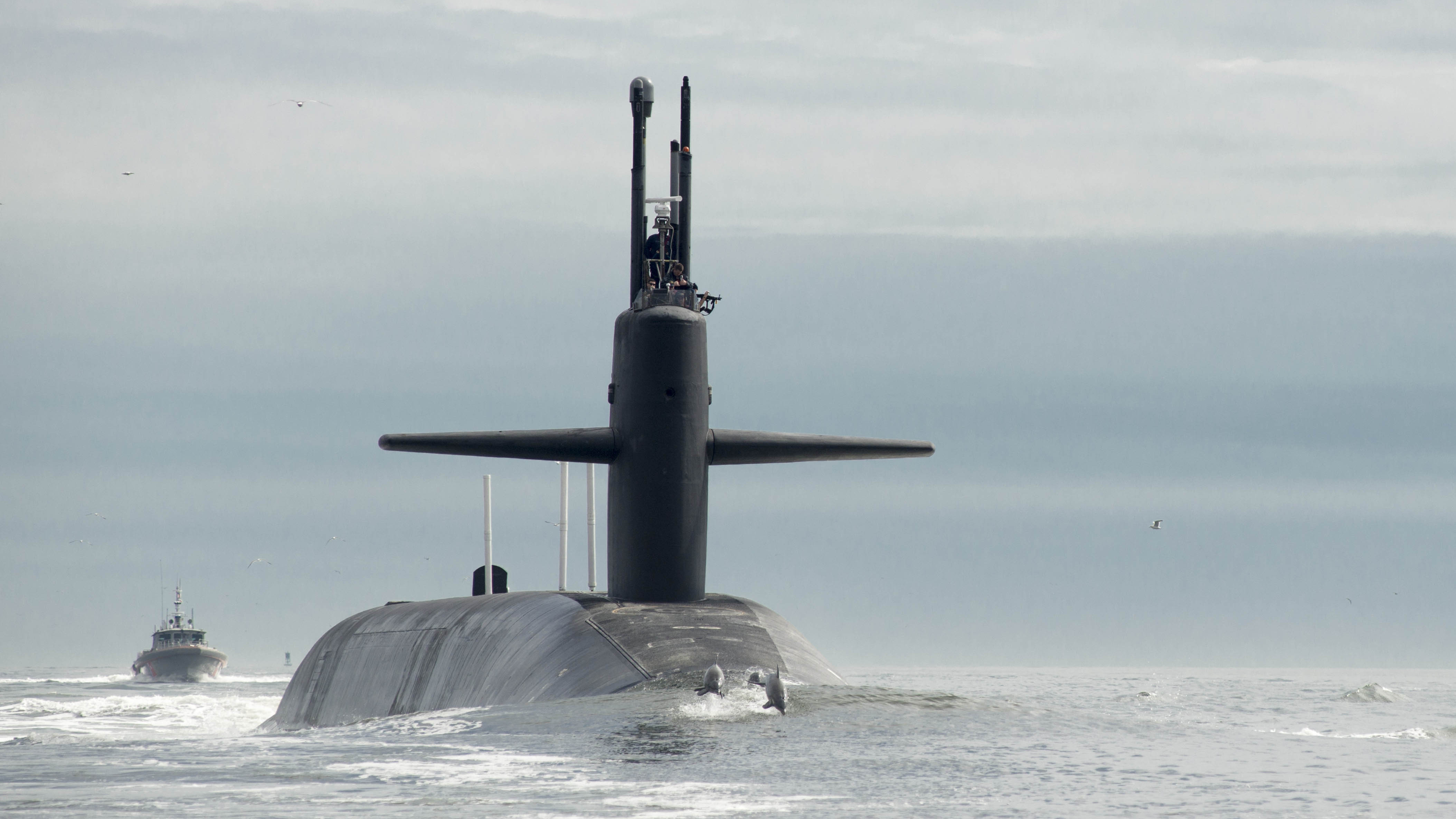The U.S. has begun deploying a new type of low-yield nuclear warhead aboard some ballistic missile submarines, according to a report by an independent monitor.
When the USS Tennessee, an Ohio-class submarine, went on patrol in the final weeks of 2019, it carried "one or two" of the new weapons, according to a post by the Federation of American Scientists.
"It is apparently still out there now and expected to come back sometime in February," says Hans Kristensen, director of the group's nuclear information project. He believes a second submarine carrying the weapon may also be patrolling in the Pacific.
Kristensen says the assessment is based on conversations with government officials, who have spoken to the group about the weapon's deployment.
The Pentagon officially declined to comment on the report: "It is U.S. policy to neither confirm nor deny the presence or absence of nuclear weapons at any general or specific location, as such, we cannot confirm or deny this reporting at this time," it said in a written statement to NPR.
The warheads were produced by the Department of Energy over the past year. An Energy Department spokesperson confirmed to NPR in November that they had been transferred to the U.S. Navy.
The weapon is known as the W76-2, and it appears superficially identical to the much more powerful W76-1 nuclear weapons carried by the same submarines. But unlike those thermonuclear whoppers, the W76-2 has a relatively "small" yield of perhaps, 5 kilotons — or about one-third the size of the Hiroshima bomb, according to Kristensen. It was developed in response to the Trump Administration's Nuclear Posture Review, which outlined the need for smaller nukes.
Much of that need centers around Russia, which the administration says is preparing to use small nukes in a conflict. The idea is that Russia would use relatively low-yield nuclear weapon to get a superior adversary such as the U.S. or NATO to back down in a conflict, according to Katarzyna Zysk, who studies Russian military doctrine at the Norwegian Institute for Defence Studies in Oslo.
Zysk says that Russia has made a number of vague statements about nuclear use recently, while deploying several systems that are capable of carrying smaller "tactical" nuclear weapons. Deploying a weapon such as the W76-2 undermines any Russian strategy of using small nukes in a conflict, she says, because it gives the U.S. a way to respond without rolling out the big ones. "That's the simple logic," she says.
But critics warn that the strategy carries huge risks. For one thing, there is no way for a potential adversary to tell the difference between the launch of a ballistic missile tipped with a low-yield warhead and one carrying a "large" warhead. The Russians, monitoring U.S. launches, could easily confuse the two.
Perhaps the greater risk, Kristensen warns, is that a tit-for-tat exchange of small nuclear weapons could lead to a larger nuclear war. "Once you start popping nukes, the bets are off," he says.

